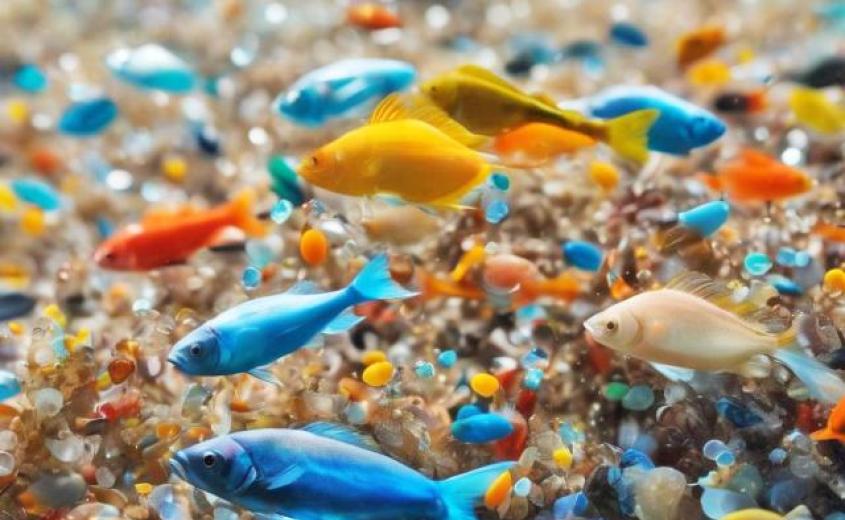Tiny Plastic Pieces Infiltrating the Food Chain: A Need for Attention

Plastics do not vanish when we dump them, instead they are actually breaking into small pieces that are invading our environment. These tiny plastic particles are now everywhere; from the air we breathe to the waters that surround us.
Research has shown that each year, an average person unknowingly consumes nearly 10,000 tiny plastic particles. These little plastic bits have a big impact on aquatic life, causing issues in tissues, messing with hormones, and even making it harder for small aquatic creatures to reproduce.
Microplastics are those tiny plastic pieces, usually less than 5 millimeters wide. They can be primary (intentionally made small, like microbeads in cosmetics) or secondary (resulting from larger plastic breaking down).
The plastic revolution that started after World War II now has us producing over 400 million tons of plastic every year worldwide. Shockingly, a 2021 study from the United Nations Environment Program (UNEP) suggests that this could reach a mind-boggling 1.1 billion tons per year by 2050.
Microplastics quietly infiltrate ecosystems, contaminate food, and even enter our bodies. They're in water, seafood, clothing, toothpaste, and even the air we breathe, posing a global crisis. They have been found in surprising places within the human body, including the lungs, urine, and even the brain. They can penetrate cell membranes and the blood-brain barrier, raising health concerns. But research on the effects of microplastic exposure is limited, especially in Africa and Low- and Middle-Income Countries (LMICs), where the issue often goes unnoticed.
In a recent interview, Francis Nuamah shared findings from his study at the Centre for Coastal Management, Africa Centre of Excellence in Coastal Resilience, Ghana. He investigated microplastics in the Gulf of Guinea, specifically their levels in sediments, fish gills, and guts collected off Ghana's coast.
What did he find?
Microplastics, those tiny bits of plastic, had gathered in the sediments and the bodies of two species of fish he used for the study. Shockingly, nearly all kinds of microplastics were found in sediment samples from various locations.
Francis, currently pursuing a Ph.D. program in Ecology and Evolutionary Biology at University of Toronto, Canada, emphasized that microplastics act as carriers for various chemicals, including additives and plasticizers used in their production.
The young researcher revealed that microplastics have the capacity to adsorb environmental chemicals like Persistent Organic Pollutants (POPs) and transfer them to organisms when ingested. He explained, “As solid particles with small sizes, they can penetrate cell barriers, causing abrasions and releasing chemicals into tissues. Plastics have become an integral part of our lives, and I can't fathom telling someone to entirely avoid them. However, as individuals, we can take action by managing our plastic consumption, particularly by practicing the 3Rs: Reuse, Recycle, and Reject,” he advised.
A study by Luigi Montano and colleagues found microplastics in human semen. The study identified various types of chemicals, including polypropylene, polyethylene, polyethylene terephthalate, polystyrene, polyvinyl chloride, polycarbonate, polyoxymethylene, and acrylic. These findings suggest that ingestion and inhalation are potential ways that environmental microplastics enter our bodies, possibly affecting our ability to reproduce.
Researchers must keep studying the impacts of microplastics, while regulatory bodies, such as Environmental Protection Agency, should set up strict rules to monitor and reduce microplastic pollution. Everyone, from industries to individuals, must limit plastic use and follow the 3Rs to protect our ecosystems and future generations. It's time for urgent action.
Story by: Mustapha Bature Sallama


